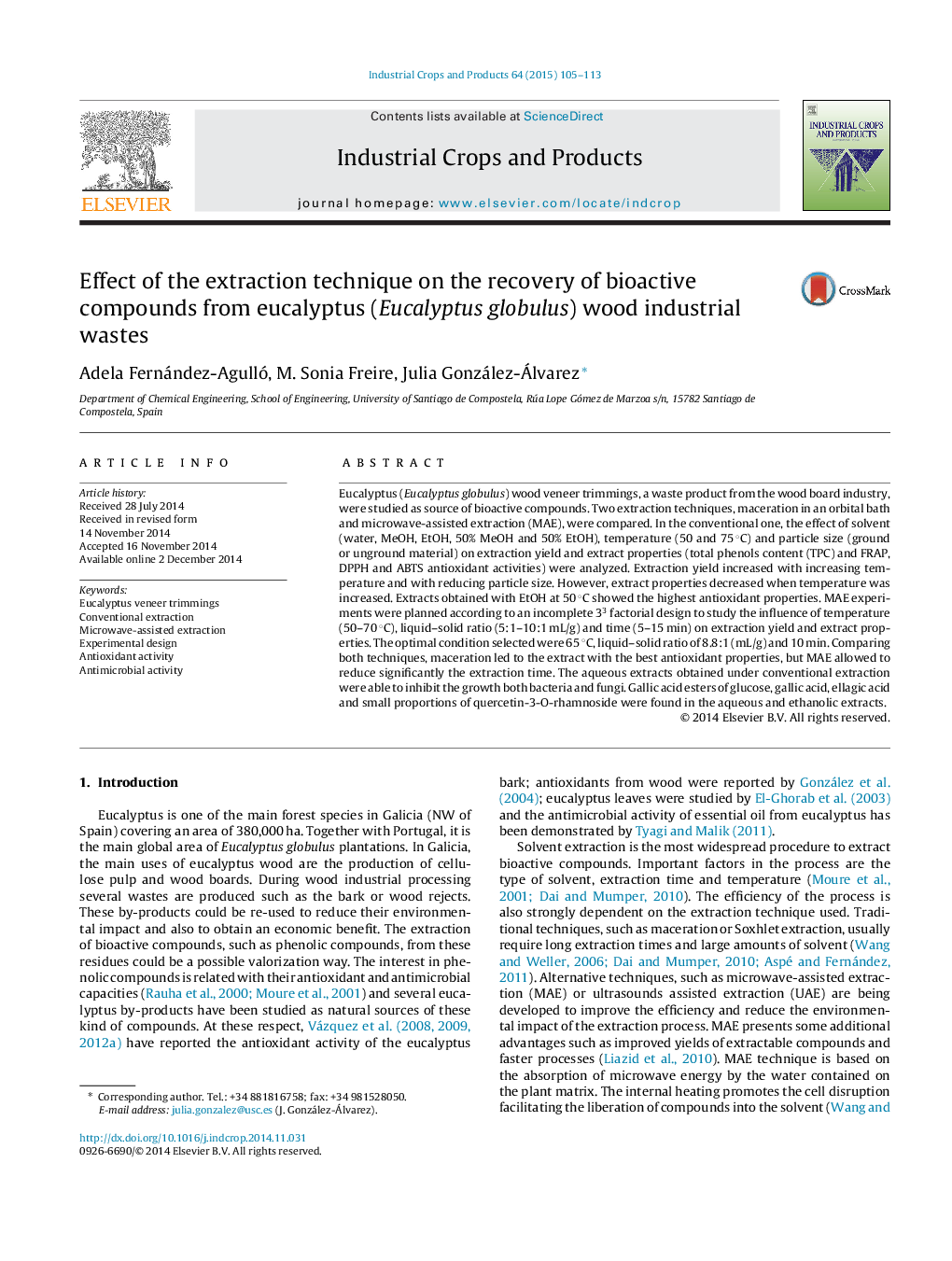| کد مقاله | کد نشریه | سال انتشار | مقاله انگلیسی | نسخه تمام متن |
|---|---|---|---|---|
| 4513013 | 1624845 | 2015 | 9 صفحه PDF | دانلود رایگان |
• Maceration and microwave-assisted extraction of eucalyptus veneers were compared.
• EtOH at 50 °C led to the best results for maceration extraction.
• Microwave extraction allowed to reduce the extraction time.
• Eucalyptus wood extracts showed high antioxidant and antimicrobial potential.
• Gallic acid esters of glucose and gallic and ellagic acids were identified.
Eucalyptus (Eucalyptus globulus) wood veneer trimmings, a waste product from the wood board industry, were studied as source of bioactive compounds. Two extraction techniques, maceration in an orbital bath and microwave-assisted extraction (MAE), were compared. In the conventional one, the effect of solvent (water, MeOH, EtOH, 50% MeOH and 50% EtOH), temperature (50 and 75 °C) and particle size (ground or unground material) on extraction yield and extract properties (total phenols content (TPC) and FRAP, DPPH and ABTS antioxidant activities) were analyzed. Extraction yield increased with increasing temperature and with reducing particle size. However, extract properties decreased when temperature was increased. Extracts obtained with EtOH at 50 °C showed the highest antioxidant properties. MAE experiments were planned according to an incomplete 33 factorial design to study the influence of temperature (50–70 °C), liquid–solid ratio (5:1–10:1 mL/g) and time (5–15 min) on extraction yield and extract properties. The optimal condition selected were 65 °C, liquid–solid ratio of 8.8:1 (mL/g) and 10 min. Comparing both techniques, maceration led to the extract with the best antioxidant properties, but MAE allowed to reduce significantly the extraction time. The aqueous extracts obtained under conventional extraction were able to inhibit the growth both bacteria and fungi. Gallic acid esters of glucose, gallic acid, ellagic acid and small proportions of quercetin-3-O-rhamnoside were found in the aqueous and ethanolic extracts.
Figure optionsDownload as PowerPoint slide
Journal: Industrial Crops and Products - Volume 64, February 2015, Pages 105–113
